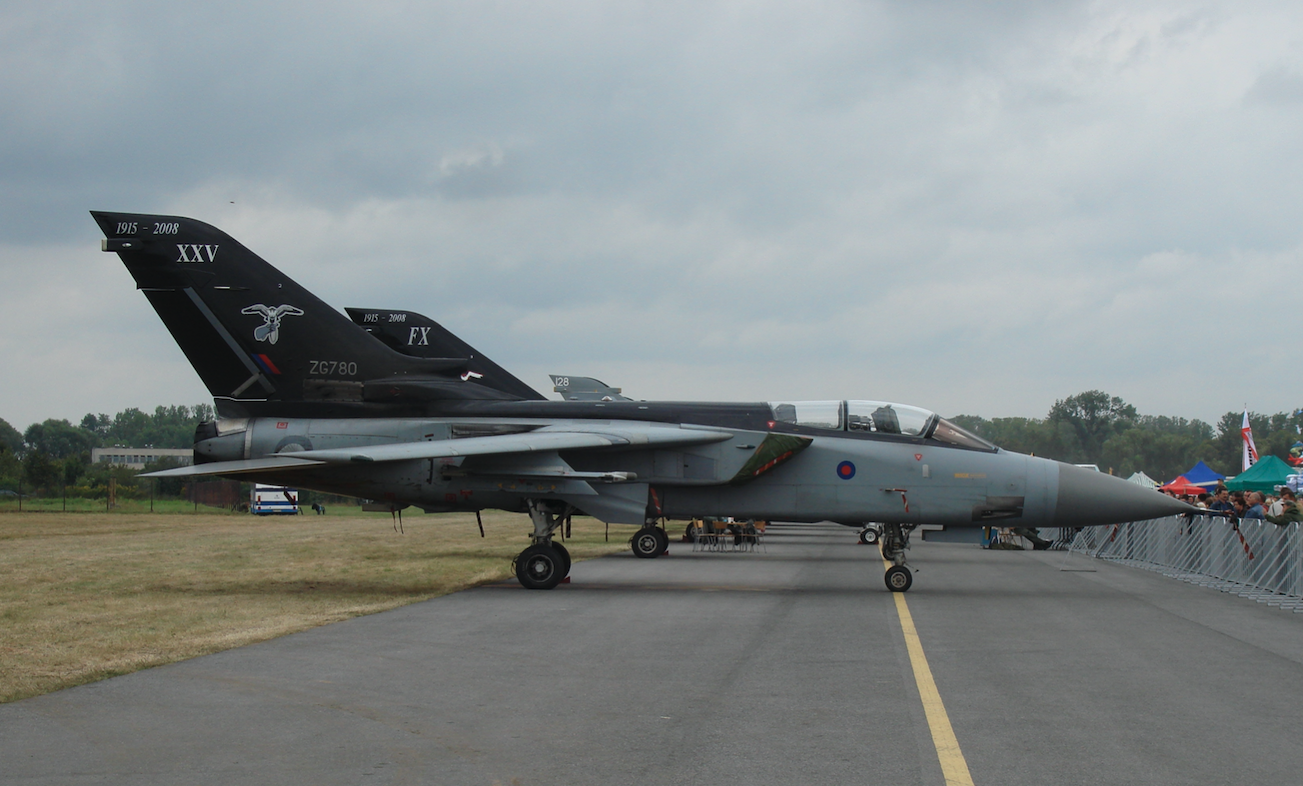History
The Panavia Tornado is one of the most interesting aircraft in history, not only for its design, but also for political reasons. Let us remind you that after the Second World War, the German State was completely demilitarized. But after a few years, it turned out that the costs of defending the German borders were borne by the societies in the USA and Western Europe. In 1955, Germany was admitted to the NATO alliance and their armament began. Not only that – Germany demanded nuclear (nuclear) weapons from the USA. From 1956, large numbers of Republic F-84 F Thunderstreaks (450 F-84 F and 108 RF-84 F) began to be delivered to Germany. Then there were Lockheed F-104 Starfighters and others. The German arms industry recovered quickly, to the extent that it was already developing its own aircraft structures in the 1960s. And already in 1974, the Panavia Tornado heavy combat plane, a joint effort of Germany, Great Britain and Italy, was overturned. Everyone forgot that the Germans should not have an army.
The fleet of Tornado aircraft has for many years been the most important part of the air forces of three European NATO countries. They remain in the composition of the air forces of Great Britain (Royal Air Force), Italy (Aeronautica Militare Italiana) and Germany (Luftwaffe) and in the aviation of the German Navy (Marinefliege). In addition, in 1985, Saudi Arabia ordered a number of these aircraft and incorporated them into its armed forces (Royal Saudi Air Force). Tornado planes will remain in service until at least 2020.
Tornado construction assumptions.
The main goal of the designers was to create a modern and fast attack aircraft with a long range and high payload. Such a machine was to be capable of long-distance flight at a very low altitude (in order to avoid locating it by area control radars and early warning) and performing a powerful, precise attack on land forces and military infrastructure, especially Warsaw Pact airports, and everything indicates the fact that this intention was realized.
The Panavia Tornado aircraft concept is very similar to the American General Dynamics F-111 Aardvark, the British BAC TSR.2 and, on the other side of the Iron Curtain, the Soviet (Sukhoi T-6) Sukhoi Su-24. The problem was in the end result. The American program developed with great difficulties, often with the specter of a failure. The British program failed for financial reasons. The only reasonable solution was either to accept the F-111 (which the UK has already begun to implement) or to start work again in an international group. However, it was not possible to start work on the fallen BAC TSR.2, because the airframe concept did not correspond to modern knowledge. It was almost automatically suggested to follow the development path of the General Dynamics F-111 Aardvark aircraft.
The Panavia Tornado was designed mainly by British engineers. The plane was designed as a supersonic, twin engine, with variable wing geometry. Initially, the plane was supposed to be single or double. In the end, the plane was built only as a double plane. The seats in the cabin were arranged in tandem. The air intakes for the engines were placed on the sides of the aircraft fuselage. The fuselage of the plane is spacious, which made it possible to accommodate rich equipment, avionics and fuel. There were no armament chambers in the fuselage, because at that time little attention was paid to the size of the radar echo. The plane was designed to carry 16,000 lb (7,257.5 kg) of weapons, which were to be diverse and suitable for the given user.
Written by Karol Placha Hetman





